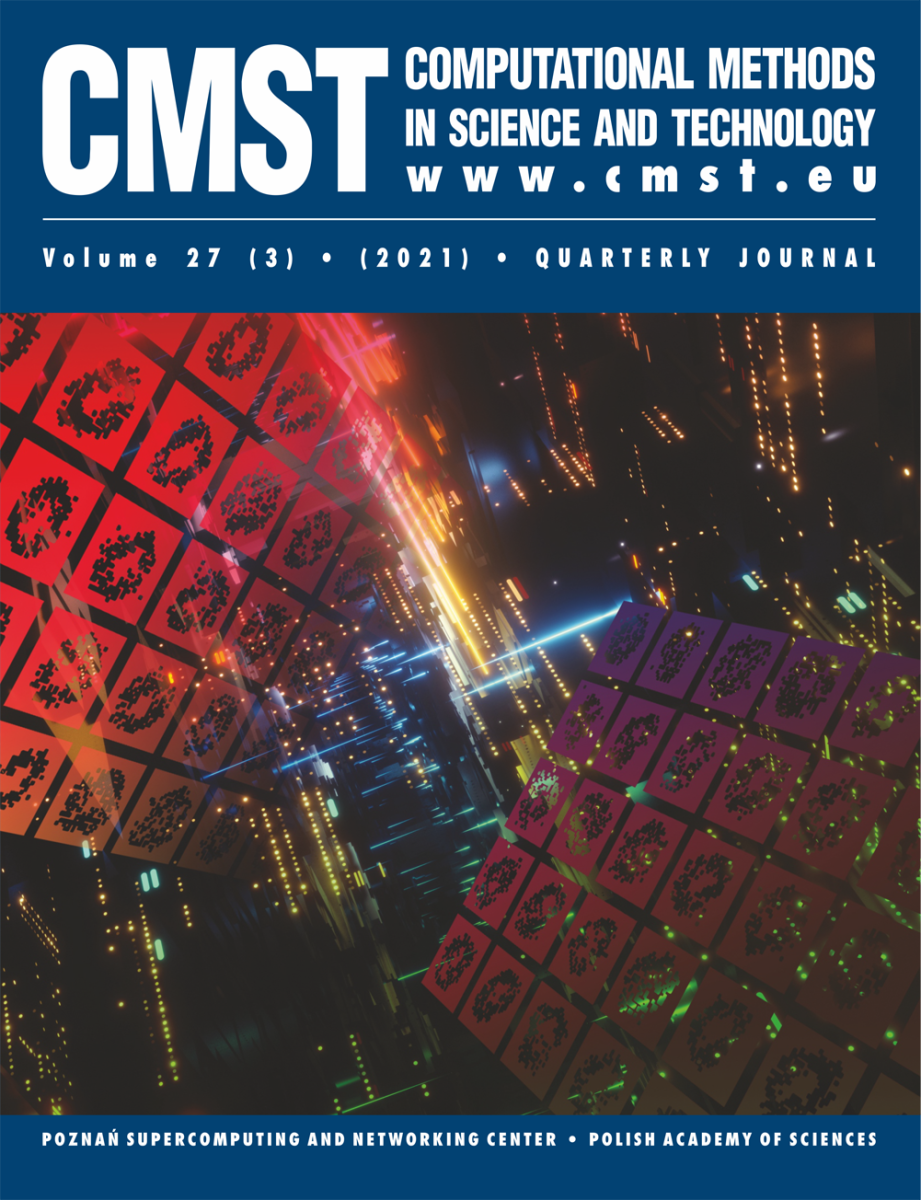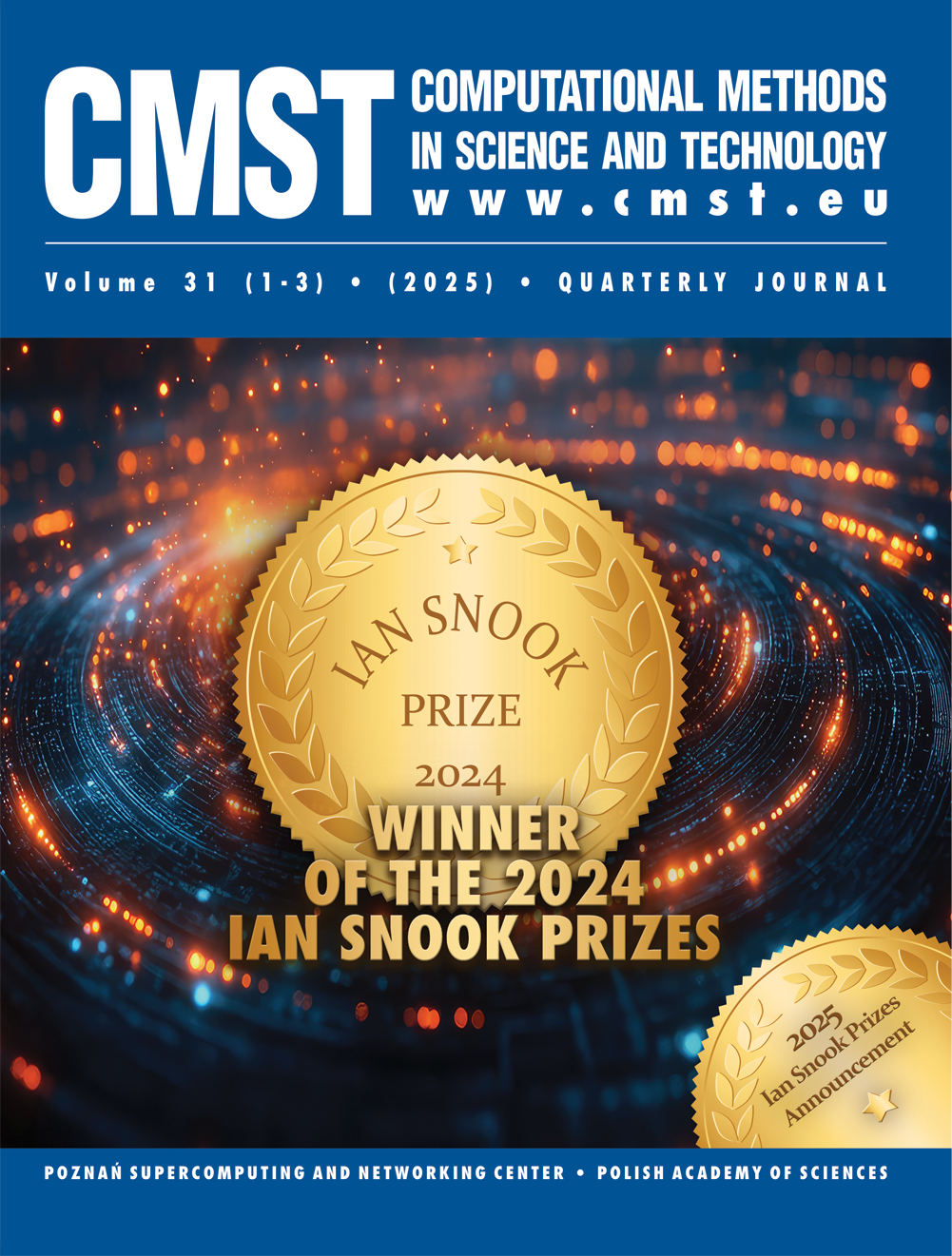Assembler Encoding Improved
Polish Naval Academy, Institute of Naval Weapon, Gdynia, Poland
t.praczyk@amw.gdynia.pl
Received:
(Received: 03 February 2012; revised: 17 March and 30 April 2012; accepted: 02 May 2012; published online: 14 May 2012)
DOI: 10.12921/cmst.2012.18.01.11-24
OAI: oai:lib.psnc.pl:421
Abstract:
Assembler Encoding is a neuro-evolutionary method which was used to produce a neural decision system for a team of autonomous underwater vehicles. Since results accomplished during experiments with the classic variant of Assembler Encoding appeared to be unsatisfactory, the method has been appropriately improved. The paper presents modifications to Assembler Encoding and reports experiments whose main goal was to test effectiveness of each of them.
Key words:
References:
[1] M. Alden, A. Van Kesteren, R. Miikkulainen, Eugenic Evolution Utilizing a Domain Model, In: Proceedings of the Genetic and Evolutionary Computation Conference (GECCO-2002), (2002).
[2] L. Baird III, Reinforcement Learning Through Gradient Descent, PhD thesis, Carnegie Mellon University, Pittsburgh, (1999).
[3] T.J. Fossen, Guidance and Control of Ocean Vehicles, John Wiley and Sons Ltd., (1994).
[4] J. Gauci, K. Stanley, Generating large-scale neural networks through discovering geometric regularities, In: Proceedings of the Genetic and Evolutionary Computation Conference, pp. 997-1004 (2007).
[5] D.E. Goldberg, Genetic algorithms in search, optimization and machine learning, Addison Wesley, Reading, Massachusetts, (1989).
[6] F. Gomez, R. Miikkulainen, Incremental evolution of complex general behavior, Adaptive Behavior, 5: 317-342, (1997).
[7] F. Gomez, J. Schmidhuber, R. Miikkulainen, Accelerated Neural Evolution through Cooperatively Coevolved Synapses, Journal of Machine Learning Research, 9:937-965, (2008).
[8] F. Gruau, Neural network Synthesis Using Cellular Encoding And The Genetic Algorithm, PhD Thesis, Ecole Normale Superieure de Lyon (1994).
[9] K. Krawiec, B. Bhanu, Visual Learning by Coevolutionary Feature Synthesis, IEEE Trans. on Systems, Man, and Cybernetics, Part B: Cybernetics. 35:409-425 (2005).
[10] T. Kubaty, L. Rowinski, Mine counter vehicles for Baltic Navy, Internet,http: //www.underwater.pg.gda.pl
[11] G.F. Miller, P.M. Todd, S.U. Hegde, Designing Neural Networks Using Genetic Algorithms, Proceedings of the Third International Conference on Genetic Algorithms. 379-384. of Schaffer J.D. (1989).
[12] D.E. Moriarty, Symbiotic Evolution of Neural Networks in Sequential Decision Tasks, PhD thesis, The University of Texas at Austin, TR UT-AI97-257 (1997).
[13] P. Nordin, W. Banzhaf, F. Francone, Efficient Evolution of Machine Code for CISC Architectures using Blocks and Homologous Crossover, Advances in Genetic Programming III, MIT Press, L. Spector and W. Langdon and U. O’Reilly and P. Angeline, pages. 275-299 (1999).
[14] M. Potter, The Design and Analysis of a Computational Model of Cooperative Coevolution, PhD thesis, George Mason University, Fairfax, Virginia (1997).
[15] M.A. Potter, K.A. De Jong, Cooperative coevolution: An architecture for evolving coadapted subcomponents, Evolutionary Computation, 8(1), 1-29 (2000).
[16] T. Praczyk, Solving the pole balancing problem by means of Assembler Encoding, in review.
[17] T. Praczyk, Evolving co-adapted subcomponents in Assembler Encoding, International Journal of Applied Mathematics and Computer Science, 17(4) (2007).
[18] T. Praczyk, Selecting genetic algorithms for assembler encoding, Archives of Control Science, Volume 18(LIV), No. 4, pp. 477-495 (2008).
[19] T. Praczyk, Using assembler encoding to solve inverted pendulum problem, Computing and Informatics, Vol. 28, 2009, pp. 895-912 (2009).
[20] J.W. Prior, Eugenic Evolution for Combinatorial Optimization, MSc Thesis, The University of Texas at Austin, (1998).
[21] O. Stanley, Efficient Evolution of Neural Networks Through Complexification, PhD thesis, Department of Computer Science, The University of Texas at Austin, Technical Report AI-TR-04-314, (2004).
[22] O. Stanley, R. Miikkulainen, Evolving neural networks through augmenting topologies, Evolutionary Computation, 10:99-127, (2002).
[23] P. Szymak, Using of fuzzy logic method to control of underwater vehicle in inspection of oceanotechnical objects, Polish Neural Network Society, Artificial Intelligence and Soft Computing, 163-168 (2006).
[24] P. Szymak, Simplified mathematical model of underwater vehicle and its control system, in Polish, Pomiary, Automatyka i Robotyka, No. 2 (2010).
[25] D. Whitley, The GENITOR algorithm and selective pressure: why rank-based allocation of reproductive trials is best, In Proceedings of the Third International Conference on Genetic Algorithms and Their Applications, pp. 116-121
(1989).
Assembler Encoding is a neuro-evolutionary method which was used to produce a neural decision system for a team of autonomous underwater vehicles. Since results accomplished during experiments with the classic variant of Assembler Encoding appeared to be unsatisfactory, the method has been appropriately improved. The paper presents modifications to Assembler Encoding and reports experiments whose main goal was to test effectiveness of each of them.
Key words:
References:
[1] M. Alden, A. Van Kesteren, R. Miikkulainen, Eugenic Evolution Utilizing a Domain Model, In: Proceedings of the Genetic and Evolutionary Computation Conference (GECCO-2002), (2002).
[2] L. Baird III, Reinforcement Learning Through Gradient Descent, PhD thesis, Carnegie Mellon University, Pittsburgh, (1999).
[3] T.J. Fossen, Guidance and Control of Ocean Vehicles, John Wiley and Sons Ltd., (1994).
[4] J. Gauci, K. Stanley, Generating large-scale neural networks through discovering geometric regularities, In: Proceedings of the Genetic and Evolutionary Computation Conference, pp. 997-1004 (2007).
[5] D.E. Goldberg, Genetic algorithms in search, optimization and machine learning, Addison Wesley, Reading, Massachusetts, (1989).
[6] F. Gomez, R. Miikkulainen, Incremental evolution of complex general behavior, Adaptive Behavior, 5: 317-342, (1997).
[7] F. Gomez, J. Schmidhuber, R. Miikkulainen, Accelerated Neural Evolution through Cooperatively Coevolved Synapses, Journal of Machine Learning Research, 9:937-965, (2008).
[8] F. Gruau, Neural network Synthesis Using Cellular Encoding And The Genetic Algorithm, PhD Thesis, Ecole Normale Superieure de Lyon (1994).
[9] K. Krawiec, B. Bhanu, Visual Learning by Coevolutionary Feature Synthesis, IEEE Trans. on Systems, Man, and Cybernetics, Part B: Cybernetics. 35:409-425 (2005).
[10] T. Kubaty, L. Rowinski, Mine counter vehicles for Baltic Navy, Internet,http: //www.underwater.pg.gda.pl
[11] G.F. Miller, P.M. Todd, S.U. Hegde, Designing Neural Networks Using Genetic Algorithms, Proceedings of the Third International Conference on Genetic Algorithms. 379-384. of Schaffer J.D. (1989).
[12] D.E. Moriarty, Symbiotic Evolution of Neural Networks in Sequential Decision Tasks, PhD thesis, The University of Texas at Austin, TR UT-AI97-257 (1997).
[13] P. Nordin, W. Banzhaf, F. Francone, Efficient Evolution of Machine Code for CISC Architectures using Blocks and Homologous Crossover, Advances in Genetic Programming III, MIT Press, L. Spector and W. Langdon and U. O’Reilly and P. Angeline, pages. 275-299 (1999).
[14] M. Potter, The Design and Analysis of a Computational Model of Cooperative Coevolution, PhD thesis, George Mason University, Fairfax, Virginia (1997).
[15] M.A. Potter, K.A. De Jong, Cooperative coevolution: An architecture for evolving coadapted subcomponents, Evolutionary Computation, 8(1), 1-29 (2000).
[16] T. Praczyk, Solving the pole balancing problem by means of Assembler Encoding, in review.
[17] T. Praczyk, Evolving co-adapted subcomponents in Assembler Encoding, International Journal of Applied Mathematics and Computer Science, 17(4) (2007).
[18] T. Praczyk, Selecting genetic algorithms for assembler encoding, Archives of Control Science, Volume 18(LIV), No. 4, pp. 477-495 (2008).
[19] T. Praczyk, Using assembler encoding to solve inverted pendulum problem, Computing and Informatics, Vol. 28, 2009, pp. 895-912 (2009).
[20] J.W. Prior, Eugenic Evolution for Combinatorial Optimization, MSc Thesis, The University of Texas at Austin, (1998).
[21] O. Stanley, Efficient Evolution of Neural Networks Through Complexification, PhD thesis, Department of Computer Science, The University of Texas at Austin, Technical Report AI-TR-04-314, (2004).
[22] O. Stanley, R. Miikkulainen, Evolving neural networks through augmenting topologies, Evolutionary Computation, 10:99-127, (2002).
[23] P. Szymak, Using of fuzzy logic method to control of underwater vehicle in inspection of oceanotechnical objects, Polish Neural Network Society, Artificial Intelligence and Soft Computing, 163-168 (2006).
[24] P. Szymak, Simplified mathematical model of underwater vehicle and its control system, in Polish, Pomiary, Automatyka i Robotyka, No. 2 (2010).
[25] D. Whitley, The GENITOR algorithm and selective pressure: why rank-based allocation of reproductive trials is best, In Proceedings of the Third International Conference on Genetic Algorithms and Their Applications, pp. 116-121
(1989).

